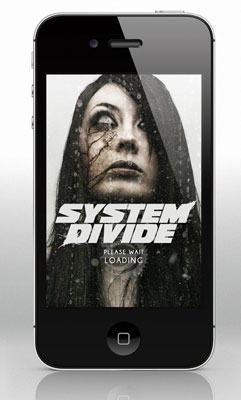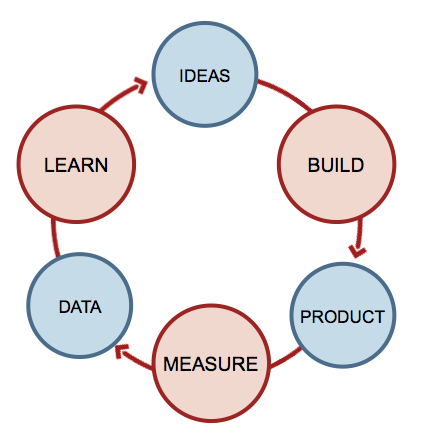Startup: what not to do or learn from the mistakes of others

A year has passed since I wrote this post. But due to the vicissitudes of fate and a number of circumstances, I publish it only now - again. I dare to assure that the topic, in general, and the material presented, in particular, did not lose relevance during this time, and the shelf life has not expired. And although much has changed since the writing of the post - MemoCards are outside of my care, Yandex.Browser is my new life - but I, like a year ago, am ready to subscribe to every word.
In this article I want to tell you what mistakes we made in the first year of the project and what conclusions I made for myself based on them. Instead of chronological narration, I chose a case format with conclusions at the end, which seems to me the most successful in this case.
A starting point
By the time when the methodology of memorizing and fixing foreign words was invented, and it was decided to translate it into a mobile application, I, as a project manager, had the following resources:- flatmate number 1 - a programmer;
- flatmate number 2 - IT-marketer;
- idea (in general);
- about $ 15K.
Everything! Nothing else. The doors are closing, the next stop is Startup!
Case 1
So, the programmer (let's call him Vasya) was a very sensible and cheerful guy who graduated from the University with a degree in Computer Science and Web-programming, which worked at that time. He willingly agreed to try himself as an iOS developer. For me, the advantages were that Vasya lived in the next room, I knew and trusted him, and the cost of his services was very low, since he had no experience in ios.A week after reading the “ Developer's Guide for iOS ”, Vasya began to produce some results. This inspired me a lot: the fundamental nature of Soviet higher education and the universality of its sons in action. Having started programming in mid-June, we planned to start in September, just in time for the beginning of the school season. My initial enthusiasm for Vasya’s rapid mastering of a new programming language was replaced in a month by quite restrained emotions, and a month later by postponing the launch date to “indefinite time”. So, the dates were systematically postponed until October-November, when Vasya first disappeared for 3 weeks, and then he was drafted into the valiant Israeli army for 2 years. The final. A curtain.
')
Conclusion 1:
The startup is a very harmonious and gentle system, all elements of which must be balanced. The fact that someone is ready to do something very cheaply should not become a decisive criterion when choosing a performer. The idea is that in no way can you save money on things that play a key role in the success of the whole event.In production management theory, there is such a thing as “Bottle Neck” - a bottleneck, a bottleneck: it does not matter how well and effectively the individual elements of the system work, if there is a process that slows down and spoils everything.
Conclusion 2:
Try not to work with friends. Yes, on the one hand, you have a great mutual understanding, but often we sacrifice his professionalism and responsibility. In the first case, unnecessarily extrapolating the personal qualities of a friend to a professional; in the second, as the result of a favorable psychological ground for pofigism: a friend will always understand and forgive, “if that”.If it happened that you decided to work with a friend, fix your agreements on paper! This will increase mutual responsibility and help preserve normal relations in the future, when the question arises, who is responsible for what and when he should have done it!
Losses:
6 months and about $ 10,000.Case №2
 In the late summer of 2011, when Vasya finished reading the iOS development guide and our company, without 5 minutes, became the leading mobile application developer, either in Israel or in the world, I decided to earn money on external orders. At the same time, it was planned to outsource outsourcing to friends in Russia, and those that are simpler to implement with Vasya.
In the late summer of 2011, when Vasya finished reading the iOS development guide and our company, without 5 minutes, became the leading mobile application developer, either in Israel or in the world, I decided to earn money on external orders. At the same time, it was planned to outsource outsourcing to friends in Russia, and those that are simpler to implement with Vasya.I actively began to attend various events, to communicate with the natives, to get acquainted, to understand the market, etc. The most interesting thing that one customer found: the application of the musical group, including audio recordings, photos, news and calendar of events. Such outsourcing is rare. Young companies need developers in in-house format; and large and solid - can be outsourced, but known and reliable.
Put it on for 2-3 was created an application with a number of bugs as a bonus. We earned $ 500 and, inspired by the success, threw fishing rods for acquaintances to the Russian showbiz. One famous pop singer liked the idea; I made a beautiful presentation and went to Moscow for talks. As you might guess, all this is not over. And thank God!
Conclusion:
A startup is a game for a while. You need to create a working product and grope a profitable business model before you run out of money. Do not waste time and engage in side activities. You lose much more than you win. Time is money!Losses:
1 month; $ 1000Case №3
On the one hand, the universal nature of the methodology of memorizing foreign words developed by me and, on the other hand, the global nature of the process of learning foreign languages prompted me to include 6 languages in the application for learning: Russian (my native language), English, German, French, Spanish and Italian. Hebrew was postponed until better times due to “commercial unpromising”.Where we got the language base - I will omit. At that moment I needed the most ready-made version, and I found it. (I believe that at the stage of launching a project, you can use any means in violation of any intellectual rights. There is a struggle not for life, but for death, and all means are good. It’s another thing that you must provide ways to go to the legal track after launching (and better - up !).
The peculiarity of the structure of this “source” allowed me to easily create cross-pairs (English-German, Italian-Spanish cards, etc.). It turned out something like a large matrix. And these are 30 possible directions to explore! Well this potentially millions of 100 users at once! After the stripping, about 3000 words remained in the list, and we began to draw and voice them. This was an important competitive advantage of the application.

Pictures We found an artist who turned out to be professional, obligatory and punctual beyond the years. But still, after a couple of days, it turned out that the descriptive instruction of a linguist — what to do and how to draw — is desirable for drawing abstract terms. So we started creating instructions for 3000 words.
Voice acting “What could be simpler,” I thought. If you live in Israel, you will always easily find a speaker of almost any language. Recorded at home. Of the equipment: microphone ala “Karaoke” and MacBook Pro. 3000 words. We figured out how the recording can be cut into separate files in semi-automatic mode, and Igor’s audio editor helped get the most “quality” out of the hack that we recorded. My advice: for a good sound, contact the professionals!
Even before the launch, in November, I received another “ingenious” idea of studying words in accordance with their frequency , which led to the emergence of new lists. This time 5000 (!) Words. Taught by previous experience, we decided to create a “samopisnaya” system for easy translation of words and drawing pictures. The voice acting was ordered this time to the professionals.
Conclusion:
I'm scared to imagine how much time we spent on creating content ... and how many grandmothers could be transferred across the road in that time.In fact, we have become hostages of our hypothesis that the application will definitely become a hit, that everyone does not have to stand up, we need our pictures and audio examples. The task of any startup is very simple: check your hypotheses as early as possible and cheaper. To do this, you do not have to do 75,000 (!!) translations of words, voice them and draw to all the pictures. By the number of words in the file and available languages, the project can be scaled relatively quickly at any time. Moreover, statistics showed that 90% of sales accounted for one pair !!! Therefore, it is very important to focus correctly!

The concept of LEAN STARTUP proposes to test all the hypotheses by mini-experiments, which will allow to obtain reliable data on the market and analyze them. Even if you were wrong, the losses will be significantly lower. Other things being equal (time and / or financial), you can test a lot of hypothesis instead of a single hypothesis, thereby greatly increasing your chances of success. This approach is called the “Build-Measure-Learn Feedback Loop”. And the faster your team makes a circle on this “loop”, the, again, the chances of survival are higher. There is nothing more valuable than reviews of real users!
Losses:
$ 15,000; many man-months of work of linguists, artists, speakers, programmers. I can not call it a full loss, but the investment is absolutely not rational.Case №4
Our ambitions demanded that we at least capture the whole world, and for this, it seemed to us, it was necessary to provide in the application all possible scenarios of the user's behavior and life circumstances. So, at the very beginning, the idea of creating several parallel training sessions appeared - suddenly he decided to learn several languages at the same time ... In general, with each new discovery of hidden user needs (which, I am sure, he himself would never guess without a hint) the list necessary functions and features grew exponentially, the terms of reference changed, the code corresponded.Results of combinatorics:

- Sessions (to learn several languages in parallel)
- Intensity of classes (for setting the frequency of classes)
- Ability to memorize (setting the number of words to the lesson)
- Depth of study (how deep the word must be memorized)
- Subject vocabulary (the ability to learn words on a particular topic)
- Frequency of the list (the order of learning from simple words to complex)
- Algorithm for selecting words for a lesson
- Various card settings (font size, image, audio, associations, etc.)
- Built-in dictionary
We deeply believed that we were doing Rolls Royce and, therefore, could not ignore the little things and details! I suppose it is for this reason that our wonderful car never left the assembly line.
Conclusion:
In fact, the main source of trouble is not the very variability of the concept. The problem is in the premises of the application as a whole. How did the project appear ?! I needed to learn a new language and there was no suitable tool. I began to solve my problem, guided by the assumption that it (the problem) is global, and the solution I developed is universal. Then I started building features and expanding functionality to increase this “universality”. So, just in case, so that no one has a sting and rub it anywhere. And in fact this process is endless.If you have a pain problem, but there is no reason to believe, a) that other people also have it; b) that your decision will suit them. Therefore, both hypotheses must be carefully checked on a representative sample. Further, it is very important to understand what the value proposition will be for the user (Value Proposition) and what functionality the Minimum Viable Product (MVP) creates for the user — a product with a minimal set of functions, but useful enough for the user to use your service.
It is very important to hear what you are told, not to try to prove to the user that he needs exactly what you have invented. This is a very difficult, important and at the same time creative task. It is necessary to find in the total mass of formally potential users - your future, for whom and for the needs of which the application itself will be created. It is very good if a small, clear and understandable group remains: for example, lonely grandmothers, 60-70 years old, living together behind the Arctic Circle and running out 100 meters from 10 seconds. The narrower this group is, the later it will be easier for you to offer the most appropriate solution.
For a good example, take my case. The problem of learning a foreign language: at first glance, it affects almost every citizen of a civilized country. But in fact, it turns out that we have, conditionally, three large disparate categories - children, schoolchildren, adults - and my application resembles the average temperature in the hospital: on the one hand, 36.6; on the other hand, there are no healthy ones. Each category has its own distinct problems and features. Student-student - learns from the textbook; pass test, exam; child, in principle, all this is not interesting without the game element; adults need a more applied nature of knowledge.
In short: as soon as you start moving from the end user and his needs to the functional, the need for global and endless universalization of the application (or web service) for the needs of a fictional user will disappear, and you will be able to focus on the critical functions that form the value core of the application. Do not spray!
Losses:
Several months of development that did not allow the project to be launched the first time.Epilogue
The described horrors should have caused you to question whether the injuries sustained are compatible with life. Indeed, we did a lot of stupid things (and still do it), but the main thing is to learn from mistakes and not repeat them. Moreover, it is even necessary to make mistakes. Mistakes are an essential element of empirical knowledge. In the end, no one has yet been born with the innate knowledge of how to make successful startups!Three books helped me realize my mistakes and adjust the course of work on the project. They can be read in parallel: you delve deeper into the essence, you try on situations on yourself, concrete ideas, a plan of action are born. It is difficult to say how useful they will be to a person without relevant experience. In any case, I strongly recommend reading all startups (old and new):
- The Four Steps to the Epiphany
- The lean startup
- Business model generation
You can read these (and other) books on the bookshelf . Just do not forget to put back!)
Source: https://habr.com/ru/post/145688/
All Articles